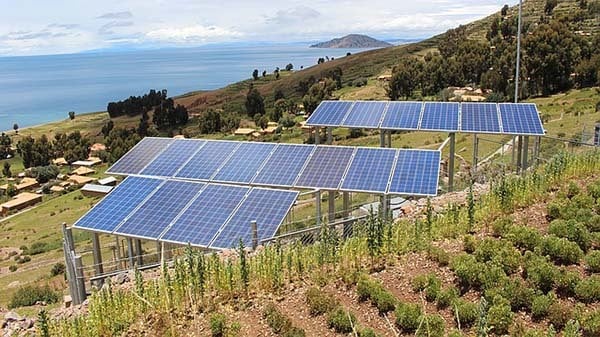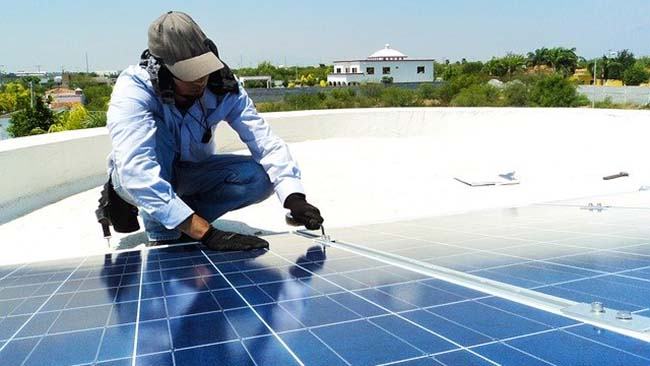The hail season often comes with terrible concerns for homeowners that rely on their solar panels for energy supply. This is because hails could be damaging to solar panels. If you are looking for how to protect your solar panel from hail, here are some of the most effective methods.
Table of Contents
- What your Solar Panels Can Endure?
- Staying Informed About the Weather
- Install your Panels to Slide Hails Off
- Nothing Beats Being Insured
- Protection and Maintenance
- What to Do After Solar Panel Damage?
- Conclusion
What your Solar Panels Can Endure?

You need to understand what your solar panels can endure because it helps you know the sort of protection they need. Manufacturers of solar panels often include resistance to offer protection against elements such as rainfall, snow, and even hail. This is because solar panels are left directly exposed to these weather conditions. However, you need to understand that these resistances are somewhat specific because they may no longer be effective in the presence of very adverse weather conditions. Hence, understanding the extent to which the resistance can protect your solar panels affords you the chance to prepare ahead.
Generally, most solar panels can withstand up to 25mm of hail, dropping at a speed of fifty miles per hour. Therefore, you might not need extra protection if you stay in locations with this range of hailfall.
Staying Informed About the Weather
Staying current with the weather forecast in locations prone to heavy hailfall will help you make adequate preparation needed to ensure your solar panels are well-protected. Although, it is ideal for making these preparations if you know the hailfall in your area exceeds the general 25mm that most solar panels can bear. However, knowing forecasts helps you anticipate the level of preventive measures you should take. It lets you understand whether to get the solar panel a great cover or uninstall, especially if the forecast predicts an unusually heavy hailfall.
Hail isn’t the only thing you need to watch out for as far as your solar panel is concerned. Massive rainfall and wind may also dislodge and damage your solar panel and saturate them with so much water that their waterproof resistance or wind rating can bear. Thankfully, most high-quality solar panels come in an aluminum frame and glass casing to provide sufficient support against harsh weather.
The cover could be from high-grade plastic, which is the comments, methacrylate, or plexiglass that is an inch thicker than your solar panel. Depending on your preference, these additional armors offer good protection and extra resistance to the impact of a heavy hailfall.
You may create some barrier over your solar panel using mesh stainless steel for locations with a more terrible hailstorm. This is ideal for solar panels constructed separately on a pole against those installed on roofs. All you have to do is create a frame, perhaps using aluminum, in the desired length and shape as the installation of your panels may require. Then spread one-inch mesh over the frame. It is almost impossible for hail to pass through a mesh with an inch opening without reducing its impact as soon as it hits the mesh.
This barrier should be installed at least five feet over your solar installation, and you will hardly experience any form of damage after a hailstorm. You may construct so that the aluminum and stainless steel mesh is removable after the hail season. As for whether the mesh would reduce direct sunlight, yes, it will, but it will only rob your solar panels of approximately twelve percent of direct sunlight, which is quite a reasonable price to pay for protection.
Install your Panels to Slide Hails Off

You mustn’t install your panels too flat on your roof or wherever you want them installed. Heavy hailfall on solar panels installed flat has a more damaging impact. Instead, try installing your panels in a way that allows hail or water to slide off them.
Try installing your solar on poles rather than roofs and arranging them to slant or slope downwards to minimize impact. Of course, in doing this, remember to tilt towards the direction of sunlight so that you can get optimal energy while protecting your panels from likely hail damage.
Tilting your panels will protect the solar panel surface, which is most prone to damage, away from danger. It mitigates possible damage and leaves the less delicate part open to the impact that, almost often, has no effect.
Nothing Beats Being Insured
While having a solar panel cover might be a fancy option, never forget to ensure your solar panel. This is even better if your solar panel is for commercial purposes and you have invested a lot in installing them. Covers may not provide a hundred percent protection during a very terrible storm or hurricane that is then accompanied by hailfall. That is why getting an insurance policy seems to be the most comprehensive protection you may give yourself. Hence, should your solar panels get damaged, there is a readily available policy to get you new ones, especially when the damage is irreparable.
Also, an insurance policy might be a lot cheaper option, in the long run, than some other fictitious options that are more expensive to install and won’t even offer complete protection against adverse weather damage.
Protection and Maintenance
As important as protecting your solar panels, it is equally important to have them maintained regularly. Regular maintenance will help you detect damages from hailstorms and other adverse weather conditions. Furthermore, it could be regular check-ups after a hailstorm to ensure that the entire installation is damage-free and working at an optimal level. That is why it is highly recommended to seek technical maintenance from a professional at least twice a year for periodic maintenance or after a heavy hailstorm.
Since these technicians are professionals, they help you detect damages that aren’t only excessive damages that you might not be able to see, but they can detect using top-notch testing kits.
Read more:
What to Do After Solar Panel Damage?
While some brands may offer a warranty to cater to an event of damage that happens within a particular time, others might not. Most solar panels are covered with glass protection which may break due to the impact from hailstones which may be greater than the resistance present in the panels.
However, most of these damages can be fixed by a professional technician you hire or recommend the manufacturers. Fixing cracks and other minor damages would protect your solar panels from eventual deterioration. You have invested a significant amount in their installation, so fix them as soon as you notice the damage. As mentioned earlier, regular maintenance may help detect some of these damages while still fixable.
Conclusion
Solar panels are not cheap to install, and that is why it is essential to protect them from things that may get them damaged. Hailstones are one of those things that often cause irreparable damage to solar panels. We have explained, in detail, how to protect your solar panel from hail. By exploring the plastic cover options, mesh barrier, slant installation, and insurance, you will be saving yourself the financial burden of having to get yourself a new installation after every hailstorm.